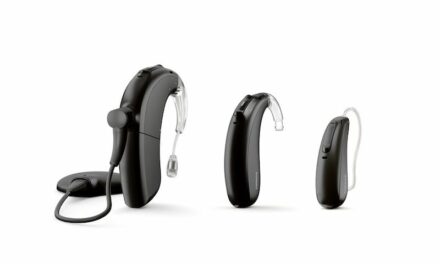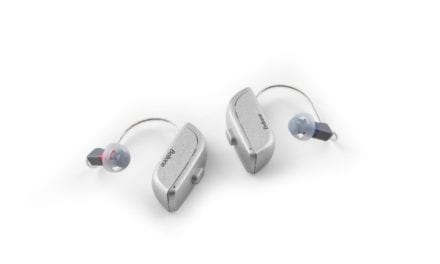The mission of Oklahoma City-based SOUNDTEC Inc is to make its cutting edge technology affordable and available to a broad base of clientele.
Feedback, occlusion, discomfort—for many hearing aid wearers, this is a way of life. But Soundtec Inc, Oklahoma City, is aiming to make these problems a thing of the past. Founded in 1997 by Kenneth Dormer, PhD, and Jack Hough, MD, SOUNDTEC offers hearing aid users with sensorineural hearing loss an implantable device—the Direct System—which produces a more natural and comfortable hearing signal than acoustic hearing aids.

SOUNDTEC’s existence as a company is as much a product of circumstance as conscious calculation. “The company was started with a number of options available to us,” says Steve Hawkins, CCC-A, vice president of sales and marketing. “We could have developed [the device] and sold the technology to another company. However, one of the many advantages the Direct System has over any other similar technology is affordability. If we lost control of pricing and allowed the cost to the patient to go past a well-established break point…well, you only have to look at what has happened with the first attempt to enter this marketplace. People just do not have $15,000 to $20,000 of disposable cash. That level of investment requires a decision of whether to pay for a college education or purchase a hearing device. The market has spoken for itself. In less than half the time, almost twice as many patients in the United States have been implanted with the SOUNDTEC Direct System than the alternative product. Our mission of making this amazing new technology available to everyone is being accomplished everyday. We’re still being approached by a number of companies to look at what they can do with us or for us.” All of SOUNDTEC’s research, marketing, and manufacturing of the Direct System are headquartered at its Oil Center Building location in Oklahoma City. The company has about 40 employees.
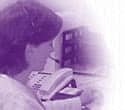
At the heart of the Direct System is a passive rare earth magnet the size of a grain rice, which is implanted in the middle ear. Its accompanying external sound processor resembles a conventional acoustic device. “The sound processor is external and it receives the sound, microphones accept the sound, it goes into the amplifiers and is amplified, and then an electrical signal is sent to the coil that is in the earmold in the ear,” says Pamela Matthews, MS, CCC-A, director of clinical studies. “When the electrical signal hits the coil, the coil emits an electromagnetic field across through the tympanic membrane to the implant on the head of the stapes. The implant moves by being impacted from the electromagnetic field. Rather than trapping sound pressure in the ear canal, we’re using electromagnetic signals to drive the implant directly on the head of the stapes. Of course, when the stapes moves, it moves the fluid in the inner ear, which then stimulates the hair cells, and triggers the hearing nerve up to the brain where sound is hopefully heard.”
The system is not suitable for every patient suffering from sensorineural hearing loss. Patients have to have hair cells and a functioning inner ear in order to be considered candidates for the Direct System. The implant is different from other invasive procedures. “Ours is totally different than the cochlear implant,” says Matthews. “We do not go into the inner ear. There are no implanted wires or electronics in the middle ear, which cochlear implants do have. With ours, the surgical approach is through the ear canal with a local anesthetic. It’s a stapedectemy approach.”
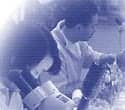
The invasive procedure takes about 15 minutes and is performed in an outpatient setting under local anesthetic. “What we’re finding is that with a 15-minute procedure…you can have the magnet portion of the device, which is the implant, installed, and from that point on everything is done externally,” says Steve Ford, SOUNDTEC COO. “The benefit is that you’ve taken out one of the physiological elements that can possibly dampen the sound, and it removes the need for some of the filtering because feedback is not an issue any longer; you don’t need to plug up the ear, so occlusion is not a problem.”
Following the procedure, which takes up to 10 weeks to heal, the patient is fitted with a processor that resembles a conventional acoustic hearing aid. And when technology advances—the company is in the process of developing a digital processor—the magnet will not have to be changed. Because it is encapsulated in titanium, the magnet should last the life of the patient.
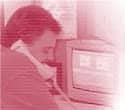
For all the benefits of the magnetic technology, there are challenges with dispensing it. “One thing is that [the dispensers] must have a tie with an otologist or an ear surgeon, because they need someone to do the surgery,” says Matthews. “The fitting is not a lot different from that for a hearing aid. They do need specialized training that we provide for them.”
A 20-Year Overnight Wonder
The Direct System is the result of 20 years of research. “The inventor of the device, Dr Hough, has been working with hearing-impaired people for a very long time, and he has seen a lot of patient complaints about hearing aids,” says Matthews. “Through different experiments with people who were like-minded, he found out that one could hear with electromagnetic stimulation. So the idea occurred to him to make that an alternative to hearing aids, because patients reported in studies during earlier surgical procedures that the sound was clearer and sharper and more pleasant than what they experienced with either a hearing aid or their degraded hearing over time. So he saw this as a viable optional treatment.”
Because the device is implantable, it is considered a Class III medical device and required Food and Drug Administration (FDA) approval. The first clinical research began with a five-patient feasibility study in 1998. A 103-patient clinical trial began in 1999. Patients were recruited via physicians and audiologists. The age range of the test group was 21 to 80 years old. Subjects had to be experienced hearing aid wearers.
The clinical trials were successful with 88% of the test subjects being very satisfied with the Direct System. The 12% who did not like the Direct System did not fit any demographic pattern, according to Matthews. This group went back to wearing their acoustic hearing aids. Because the magnet is passive, those who stopped using the system did not have to have the device removed. This is another benefit of the Direct System. If, for some reason, the signal processor is disabled, the patient can use a regular acoustic hearing aid until it is repaired.
With the success of the trials, the next step was FDA approval, which turned out to have unexpected results. SOUNDTEC had expected to launch the Direct System in late 2002, but the FDA approved the device almost a year early in September 2001. “Our experience with the FDA was very positive,” says Matthews. “I was really surprised at how proactive they were at working with us, giving us insight into things they have seen on other approved devices. Of course, we looked at the cochlear implant. That was the main device before the middle ear implant started. And we tried to use tests they were already familiar with. When we had all of our clinical data collected and we sent it in, due to the less invasive nature of our device and the safety that we showed with the clinical study, we didn’t even have to go to panel. We were able to have in-house review by the FDA and received approval without having the public forum panel.” The Direct System was approved for patients with moderate to severe hearing loss aged 18 and older.
Since gaining clearance last September, more than 400 patients in the United States and Canada have undergone the procedure. In addition, the company has trained more than 300 surgeons and 150 audiologists. “We now have a training schedule and facility set up in Oklahoma City,” says Hawkins. “Every Friday we host surgeons and audiologists from all over the world. Right now, we’re setting up as many centers as we can, and we have to scrutinize those as well to make sure that the professionals who are involved will not only be able to start a program but actually keep it going.”
Marketing the Cutting Edge
Despite an abundance of hearing instrument companies—offering a range of assistive to implantable devices—there is more than enough room for the Direct System. “Just in the United States there are 28 million people with hearing loss…but only 2.5 million hearing aids are sold in the United States per year, and only about 6 million wear the devices,” says Hawkins. “Where are the other 22, 23 million? Why aren’t they being helped? Why aren’t they taking advantage of what’s out there? The reason we ventured into this technology is to try to get help for those people.”
Marketing the new technology requires a dual-pronged approach aimed at both end users and hearing professionals. “Not only do you have to educate the physicians and audiologists and all the hearing health care professionals out there that this technology exists and it’s effective and safe, but you also have to go to the other side of the market and that’s the end users, the potential consumers, and educate them in the same way,” says Hawkins. “And that’s vitally important to what we do. With the advent of the Internet and the ease and speed of communications, a lot of these potential consumers are extremely educated when they hit the professional’s office. These patients go in and actually can educate the hearing health care professional as to what’s out there.”
Marketing involves taking the technology directly to the consumers—both audiologists and patients. “On the professional side, we attend all of the scientific updates, we attend all of the conventions, we attend and participate in as many workshops, at either university settings, private practices, or health care-sponsored community events,” says Hawkins. “On the consumer side, [we have] our Web site and attend support group meetings, like SHHH—Self Help for the Hard of Hearing—national conventions, local chapter presentations, small group presentations. Rather than go through a formal forum where we send out letters and invitations to a big presentation in a large auditorium or something like that, a lot of physicians have been [handpicking] a half dozen or so potential candidates and we sit down…and just have a very casual conversation with questions and answers.”
Because it is not covered by insurance, one of the keys to successfully marketing of the Direct System has been its price point. “This procedure does two things,” says Hawkins. “Number one, it’s minimally invasive; it’s a very simple procedure that’s done in 20 to 30 minutes in a procedure room or surgery center under local anesthetic. But the other reason we use the procedure is that it brings the cost of the device—the accessibility, the financial feasibility—down to the consumer level. They’re going to spend as much on this as they will on a conventional hearing aid, a digital hearing aid.”
Positive Feedback, No Static
James Atkins, MD, a neuro-otologist at Florida Hospital Celebration Health, Celebration, Fla, first heard about the Direct System at a professional meeting last May. “I was not fitting people with hearing aids because there were so many who were unhappy with the results,” he says. “What…interested me was when these same people were talking about the device…the satisfaction level was very high, the lack of feedback, and mainly the fact that most of the patients were reporting a significant improvement in hearing and background noise. Of all the devices out there, especially implantables, the procedure to put it in is much simpler. The likelihood of any complications or side effects is significantly less than with anything else on the market. Basically, the fact that the patients are getting a better awareness of sound and are functioning better makes me feel that it is the correct device to use.”
Since its introduction, Atkins has performed 27 procedures and has had a nearly 100% satisfaction rate. Only one of his patients has had some complaints about the sound quality—which Atkins attributes to psychological rather than physiological reasons—but is still using the device.
And even though the system is currently available only in the United States and Canada, SOUNDTEC is in the process of offering the Direct System in Brazil. Hawkins will soon travel to China for marketing meetings with government officials there. Interest has also been shown by Korea, Japan, Taiwan, and several European countries. Hough recently trained several physicians from France in the implantation procedure.
Going hand in hand with the marketing of the Direct System is customer service. Like its marketing efforts, SOUNDTEC’s customer service has two arms. It operates a call center out of its Oklahoma City headquarters to handle service and inquiry calls. In addition, it has a cadre of regional directors—field representatives—who both market and support the product. All of the regional directors are audiologists, which gives them increased credibility, says Hawkins.
The Future of the Future
Though Hawkins, Matthews, and Ford are all fervent advocates of the new technology, they agree that, like the cochlear implant, the Direct System will be part of a continuum of hearing solutions and not something that will supplant any other technologies. “I think hearing aids help a lot of people, and I think they’re wonderful and we couldn’t do without them, but it’s exciting to have another treatment option for the people who aren’t happy with the hearing aid for one reason or another,” says Matthews.
This does not mean that the Direct System will not evolve to meet market demands. “We’re looking at other applications,” says Hawkins. “We want to develop the technology so a broader range of hearing impairments may be fit, not just sensorineural, but conductive losses. We’re looking at hybrid technologies involving our device, but with other technologies as well—a totally implantable device that can be done in a noninvasive fashion, like our device, and as effective as it is. The aesthetic issue is very big, so making a totally implantable device is one of the ultimate goals at this point. Anybody who develops any kind of technology and stops at a certain point is going to be very short-lived.”
Chris Wolski is associate editor of Hearing Products Report.



